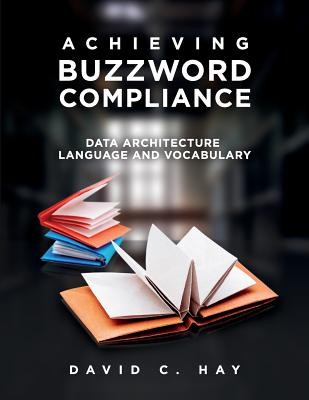
- We will send in 10–14 business days.
- Author: David C Hay
- Publisher: Technics Publications
- ISBN-10: 1634623703
- ISBN-13: 9781634623704
- Format: 21.6 x 27.9 x 1.2 cm, minkšti viršeliai
- Language: English
- SAVE -10% with code: EXTRA
Reviews
Description
Understand the language and vocabulary of Data Architecture.
The Data Architecture field is rife with terms that have become "fashionable". Some of the terms began with very specific, specialized, meanings - but as their use spread, they lost the precision of their technical definitions and become, well, "buzzwords".
A buzzword is "a word or expression from a particular subject area that has become fashionable because it has been used a lot". Compliance is "the obeying of an accepted principle or instruction that states the way things are or should be done."
The assignment is to take buzzwords and follow rules to use them correctly. We cut through the hype to arrive at buzzword compliance - the state where you fully understand the words that in fact have real meaning in the data architecture industry. This book will rationalize the various ways all these terms are defined.
Of necessity, the book must address all aspects of describing an enterprise and its data management technologies. This includes a wide range of subjects, from entity/relationship modeling, through the semantic web, to database issues like relational and "beyond relational" ("NoSQL") approaches. In each case, the definitions for the subject are meant to be detailed enough to make it possible to understand basic principles--while recognizing that a full understanding will require consulting the sources where they are more completely described.
The book's Glossary contains a catalogue of definitions and its Bibliography contains a comprehensive set of references.
EXTRA 10 % discount with code: EXTRA
The promotion ends in 23d.18:39:52
The discount code is valid when purchasing from 10 €. Discounts do not stack.
- Author: David C Hay
- Publisher: Technics Publications
- ISBN-10: 1634623703
- ISBN-13: 9781634623704
- Format: 21.6 x 27.9 x 1.2 cm, minkšti viršeliai
- Language: English English
Understand the language and vocabulary of Data Architecture.
The Data Architecture field is rife with terms that have become "fashionable". Some of the terms began with very specific, specialized, meanings - but as their use spread, they lost the precision of their technical definitions and become, well, "buzzwords".
A buzzword is "a word or expression from a particular subject area that has become fashionable because it has been used a lot". Compliance is "the obeying of an accepted principle or instruction that states the way things are or should be done."
The assignment is to take buzzwords and follow rules to use them correctly. We cut through the hype to arrive at buzzword compliance - the state where you fully understand the words that in fact have real meaning in the data architecture industry. This book will rationalize the various ways all these terms are defined.
Of necessity, the book must address all aspects of describing an enterprise and its data management technologies. This includes a wide range of subjects, from entity/relationship modeling, through the semantic web, to database issues like relational and "beyond relational" ("NoSQL") approaches. In each case, the definitions for the subject are meant to be detailed enough to make it possible to understand basic principles--while recognizing that a full understanding will require consulting the sources where they are more completely described.
The book's Glossary contains a catalogue of definitions and its Bibliography contains a comprehensive set of references.


Reviews